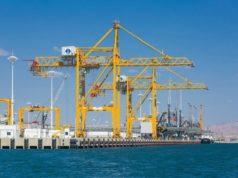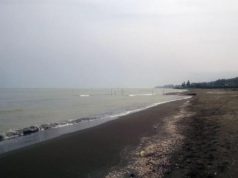The arrival of the peak refinery turnaround season in Japan is prompting a slowdown in exports of gasoil and gasoline from the country, and could potentially create opportunities for oil products to flow into the Asian consumer as the arbitrage window widens.
Japan’s refinery outages have increased to 558,000 b/d, or 16% of the total 3.52 million b/d installed refining capacity, as Fuji Oil shut its sole 143,000 b/d crude distillation unit at its Sodegaura refinery in Tokyo Bay on Friday.
JXTG Nippon Oil & Energy, Japan’s largest exporter of gasoline and gasoil, is looking to cut its exports of gasoline and gasoil in the coming months during a series of scheduled refinery turnarounds, a source familiar with the matter said.
“Exports of gasoline and gasoil will be reduced in line with the capacity decline from scheduled turnarounds,” the source said. “The exports will be reduced for the degree of decreasing [crude] processing volumes, which will continue throughout the maintenance period.”
Following the shutdown of the sole 135,000 b/d Sakai CDU on May 15, JXTG has now shut a combined 225,000 b/d of CDU capacity, or about 12% of the 1.93 million b/d of installed refining capacity across 11 refineries in Japan, until early July for scheduled maintenance programs.
For fiscal 2019-20 (April-March), JXTG expects its average refinery run to be about 90-95%, excluding the impact of refinery turnarounds, as it closely tracks overseas markets for oil products exports despite bearish domestic demand, Tsutomu Sugimori, president of parent JXTG Holdings, said on May 13.
SLOWING OIL PRODUCT EXPORTS
Japan’s exports of gasoline and gasoil dropped by 38% and 7%, respectively, to 786,986 barrels and 5 million barrels in the four weeks to May 18, compared with the previous four weeks to April 20, according to data from the Petroleum Association of Japan compiled by S&P Global Platts.
The spread between Japan’s export parity for gasoline and domestic gasoline rack prices in Kanagawa in Tokyo Bay has remained at a negative for over a year as of Tuesday, according to Platts data.
“We don’t pay that much attention to the export or import parity price when exporting oil products,” a Japanese refiner source said.
“If we have a surplus supply, we first try to adjust our [products] yield, and then focus on exports, in that order,” the source said.
“Even if export parity were bad, we have no choice other than to export [to keep the domestic supply and demand balance],” the source said. “As a last resort we might lower our operating rates, but preferably not, and we would not offer in the domestic spot market to sell any surplus cargoes.”
Rack oil products are those that are transported by refiners and other independent suppliers over land by tank lorries – loaded from either refinery tanks or secondary tanks outside the refinery.
ARBITRAGE WINDOW OPENS FOR IMPORTS
The spread between Japan’s import parity for gasoline from South Korea stood at around Yen 2,500/kl ($3.61/b) as of Tuesday, a level that makes the gasoline imports feasible, compared with March-April, when the arbitrage window was almost closed.
“Certainly the import parity is improving from the bottom over March-April, and we are in a market condition to consider importing cargoes more easily,” a Japanese trader said. “We are closely monitoring the import parity.”
The gasoline import parity, however, is down from a four-month high of more than Yen 7,500/kl on May 8. The import parity price is calculated at a premium to the Mean of Platts Singapore 92 RON gasoline assessments, plus freight costs for an SR vessel on the South Korea-western Japan route as well as insurance and import taxes.
Gasoline exports from South Korea to Japan increased to 92,071 kl, or 579,108 barrels, in April, from an eight-month low of 90,575 kl, or 569,699 barrels in March, according to Korea Customs Service statistics.
Typically imports from South Korea affect the Hanshin area in western Japan most easily due to logistics such as available tank space and berthing opportunities. A possible increase in the inflow of gasoline from South Korea also occurs as Japan heads into its peak refinery turnaround season.






